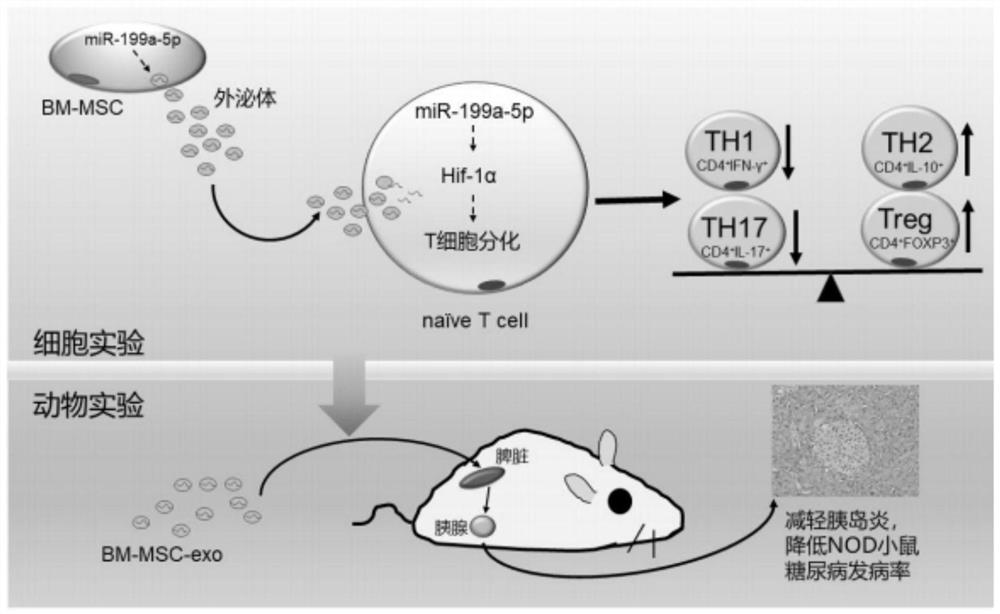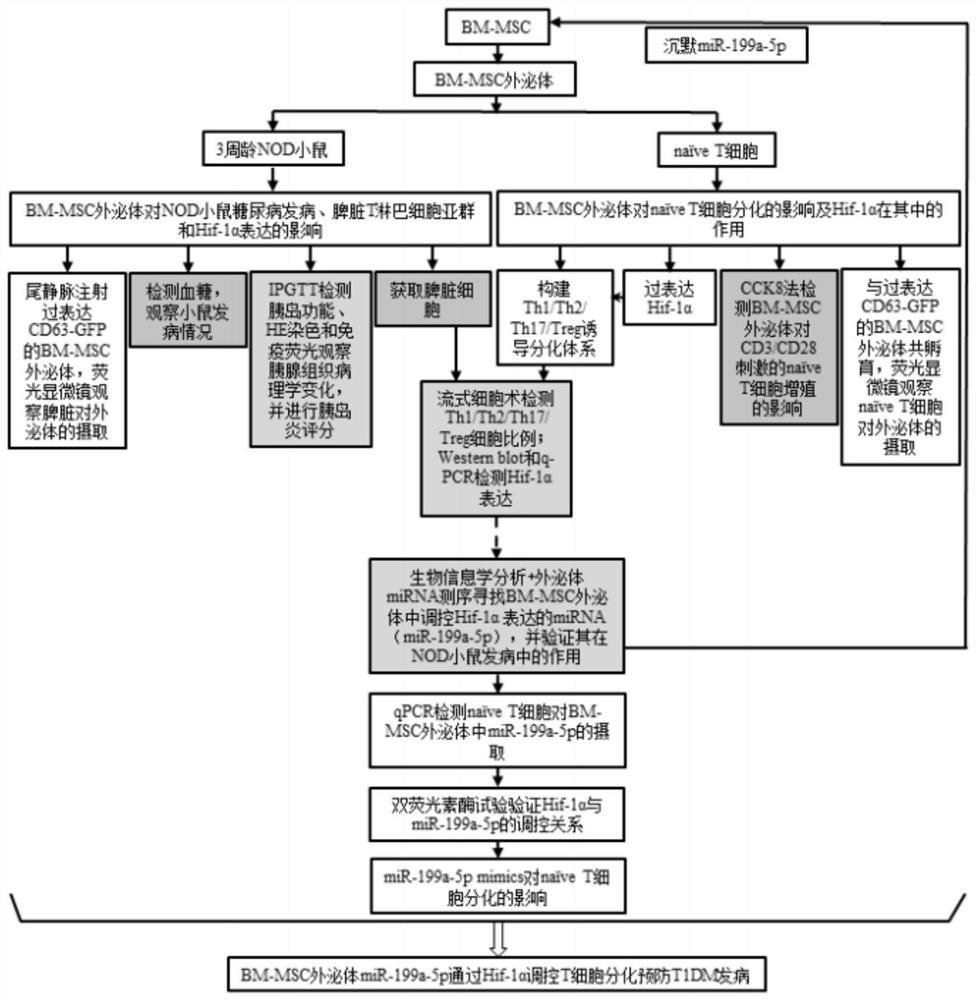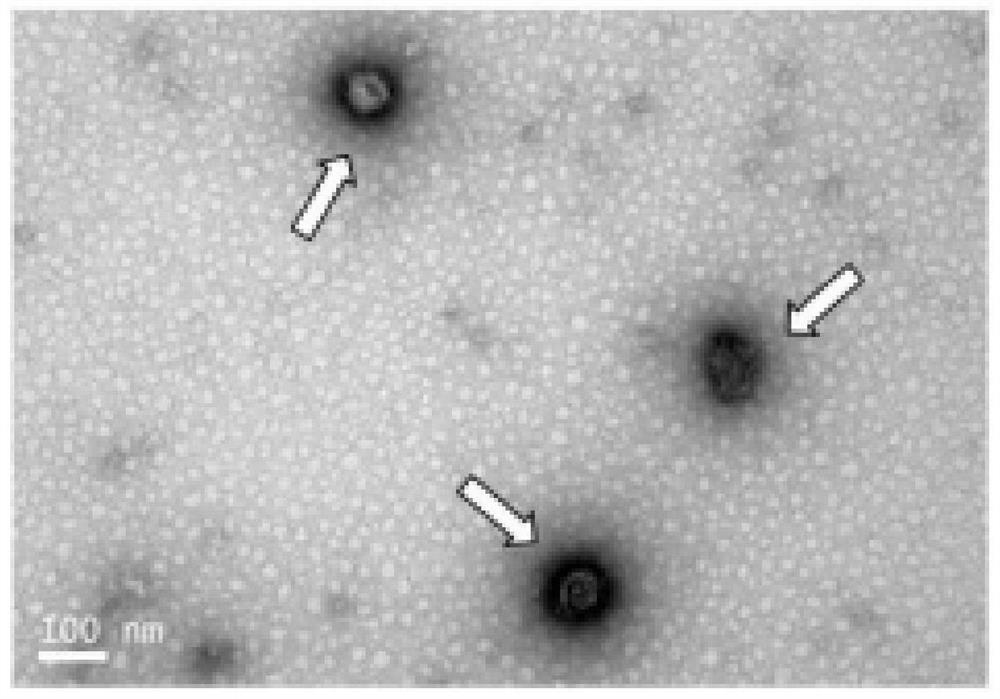Application of mesenchymal stem cell exosome in preparation of drugs for preventing or treating type 1 diabetes and related diseases thereof
A technology of type 1 diabetes and exosomes, applied in the field of biomedicine, to achieve the effect of reducing blood sugar rise, low toxicity, and preventing the onset of diabetes
- Summary
- Abstract
- Description
- Claims
- Application Information
AI Technical Summary
Problems solved by technology
Method used
Image
Examples
Embodiment 1
[0039] The extraction and identification of embodiment 1 mouse BM-MSC
[0040] (1) Separation of femur: select C57BL / 6 mice aged about 4 weeks, soak them in 75% ethanol for 5 minutes after overdose of anesthesia, and then move them into the ultra-clean bench to separate the bilateral femurs and femurs of the mice under aseptic conditions. tibia.
[0041] (2) Obtaining bone marrow: cut off both ends of the femur, expose the bone marrow cavity, use a 5mL syringe to draw complete medium (79% DMEM / F12 medium + 20% FBS + 1% double antibody) to wash the cavity, and repeatedly beat for 2- Bone marrow was harvested 3 times.
[0042] (3) Seeding plate: The bone marrow fluid extracted from one femur was inoculated into one well of a six-well plate for seeding, with about 2.5 mL per well. Put to 37℃, 5% CO 2 Cells were cultured overnight in a cell culture incubator, and replaced with new complete medium after 24 hours. In the subsequent culture, 10% FBS + 1% double antibody DMEM / F12 ...
Embodiment 2
[0044] Example 2 Extraction and identification of BM-MSC exosomes
[0045] After the P5 generation of BM-MSC was cultured, the cell culture supernatant (using fetal bovine serum without exosomes) was collected, and the exosomes in the medium were extracted by ultracentrifugation.
[0046]The specific operation in this example is as follows: take the CM blood culture supernatant, put it into a 50 mL centrifuge tube, and centrifuge at 3000 g for 30 min. Take the supernatant and put it into a high-speed centrifuge tube, centrifuge at 10000g for 30min to obtain the supernatant. Filter the supernatant with a 0.22 μm filter. The filtrate was put into a 38.5mL ultracentrifuge tube and centrifuged at 110000g for 70min. After carefully discarding the supernatant, the BM-MSC exosomes were obtained and resuspended in PBS, saline or liquid medium for use.
[0047] Observation of exosome morphology by (1) electron microscope, the observation results are as follows: image 3 shown. (2)...
Embodiment 3
[0049] Example 3 Effect of BM-MSC exosomes on the onset of diabetes in NOD mice
[0050] BM-MSC exosomes were injected into the tail vein of 3-week-old female NOD mice (150 μg / mouse), and the mice were injected once at the age of 5 weeks, 7 weeks and 9 weeks, and the dose was the same as before , carry out the following experiments respectively:
[0051] (1) Monitor blood sugar: take 2 consecutive random blood sugars ≥ 250 mg / dl as the standard for the onset of diabetes in NOD mice, and observe the onset of the mice. The statistical results of the onset of the mice are as follows: Figure 6 As shown, it can be seen from the figure that the control group without BM-MSC exosomes had no normal blood sugar mice at 30 weeks, while 80% of the mice in the experimental group added with BM-MSC exosomes still maintained normal blood sugar without disease Therefore, it can be concluded that BM-MSC exosomes can significantly reduce the incidence of NOD mice.
[0052] (2) Serological ind...
PUM
 Login to View More
Login to View More Abstract
Description
Claims
Application Information
 Login to View More
Login to View More - R&D
- Intellectual Property
- Life Sciences
- Materials
- Tech Scout
- Unparalleled Data Quality
- Higher Quality Content
- 60% Fewer Hallucinations
Browse by: Latest US Patents, China's latest patents, Technical Efficacy Thesaurus, Application Domain, Technology Topic, Popular Technical Reports.
© 2025 PatSnap. All rights reserved.Legal|Privacy policy|Modern Slavery Act Transparency Statement|Sitemap|About US| Contact US: help@patsnap.com



